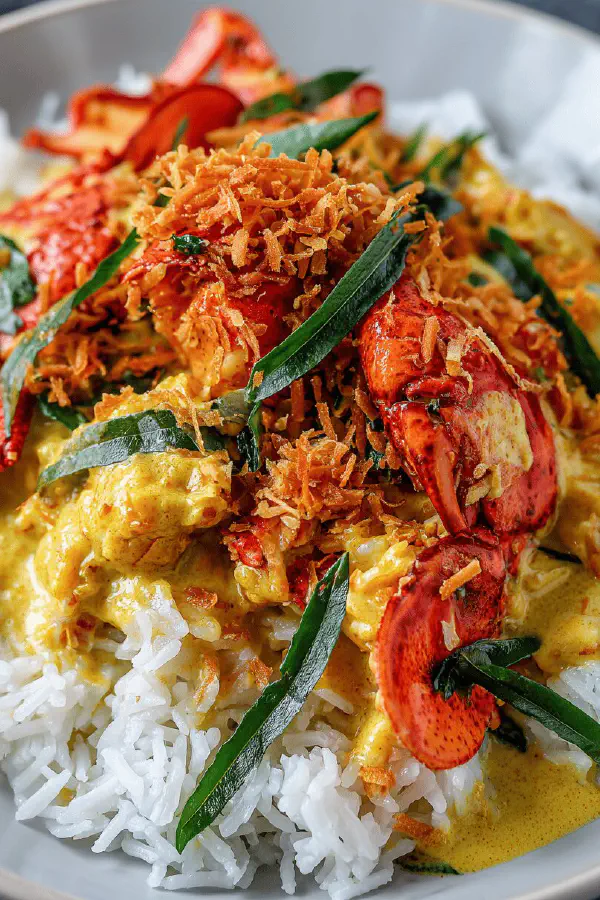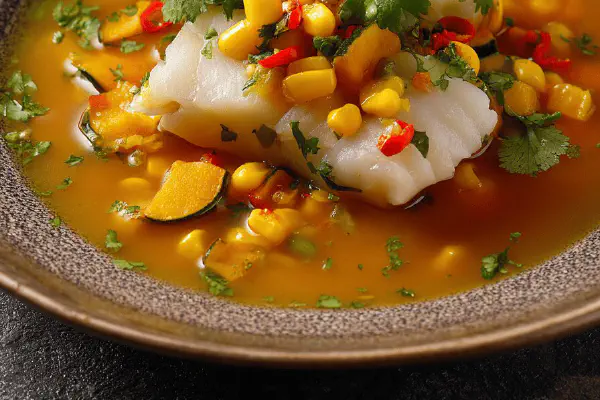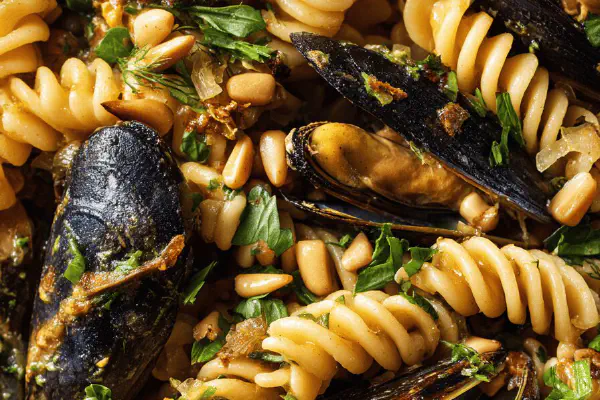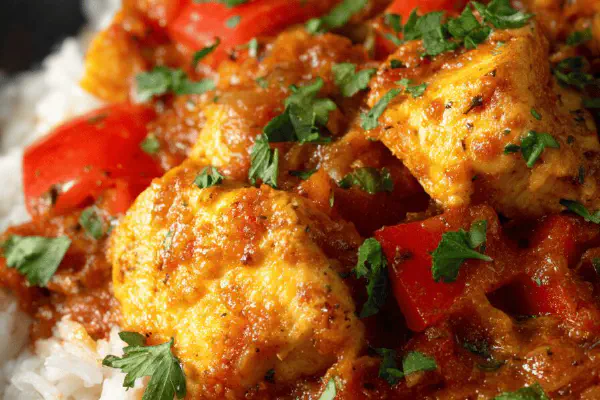Featured Recipe
Curried Lobster Coconut

By Kate
"
A quick savory curry with lobster chunks cooked in creamy coconut milk and a spice mix featuring cumin and turmeric instead of traditional garam masala. Fresh aromatics pureed for consistency and depth. Finished with shredded coconut for texture and toasts slightly in the pan. Served best over fragrant jasmine rice. Dairy and gluten free. No eggs or nuts. Adjust spice level by varying the curry powder. Lobster can be swapped with shrimp or crab meat in a pinch. Essential to watch the coconut milk simmer and thicken slightly without breaking. Flavor builds quickly—don’t overcook the shellfish. Subtle coconut oil can replace olive oil for added flavor. Salting at the end keeps lobster tender.
"
Prep:
15 min
Cook:
12 min
Total:
27 min
Serves:
4 servings
seafood
curry
coconut milk
Indian fusion
dairy free
Introduction
Forget standard lobster presentations, lobster chunks dive into creamy coconut curry. Onion and garlic blended smooth, slow-cooked till sweet, then hit with earthy turmeric and cumin instead of usual garam masala. Shredded coconut toasts in the pan—watch the color shifts, smell that toasty coconut aroma? Coconut milk simmers, thickening, carrying those fat-soluble flavors evenly. Lobster folds in at the last moment, warmed, not cooked raw or rubbery. Use what you have. Shrimp or crab fit here too. Olive oil’s fine, but coconut oil amps the aroma, adds that tropical undertone. Rice steaming nearby works as starch buffer. Salt last. Keep lobster tender. Quick, not rushed. Clean blender fast to avoid pungent buildup. Kitchen hustle with rewards.
Ingredients
About the ingredients
Onions and garlic puréed not minced mimic traditional masala base but smoother texture. If blender unavailable, finely chop and sweat longer. Olive oil adds neutral fruitiness; coconut oil deepens the tropical profile—choose based on flavor target. Spices—cumin and turmeric substituted for garam masala; cumin grounds earthiness, turmeric adds warmth and color. Medium curry powder to maintain heat balance; increase/decrease per spice tolerance. Toasted shredded coconut critical for texture contrast and flavor lift; avoid sweetened coconut unless a sweeter dish desired. Full-fat coconut milk ensures creamy mouthfeel and richness; light coconut milk makes sauce fragile and thin. Use fresh cooked lobster tails—tail meat is tender, less fibrous than claw. Salt only after warming lobster prevents toughness. Can swap lobster with firm white fish, shrimp, or crab for budget or availability. Jasmine rice preferred for fragrant subtlety; basmati acceptable. Key errors to avoid: rushed caramelization, burning spices, cooking shellfish too long causing rubbery texture.
Method
Technique Tips
Blending the onions and garlic ensures even texture, prevents raw chunks. Cook puree slowly over medium heat watching for color changes—golden patches at edges signal proper caramelization, not burnt. It’s the foundational flavor layer. Spices add tolerance to flavor complexity but must be toasted with care, no blackening. Toasting shredded coconut develops nuttiness and texture, watch closely as it browns in under two minutes. Adding coconut milk should be gradual to keep sauce smooth; raise heat only enough for steady simmer, bubbles forming at edges. Sauce will thicken subtly but don’t reduce too far or sauce becomes pasty and loses silkiness. Introduce lobster near end; it only needs warming, not cooking through. Overcooked lobster becomes stringy and tough, defeats the point of the delicate shellfish. Season only after lobster is added, salt draws moisture out prematurely if done earlier. Serve hot with fragrant rice. The residual heat of lobster meat will slightly intensify sauce aroma just after plating. Practical kitchen tips—blend onion/garlic mix first, then double blender rinse with warm water and baking soda promptly—garlic smell notoriously lingers. Taste sauce midway, adjust spice and salt gradually rather than all at once. If coconut milk splits, reduce heat and stir slowly to bring back emulsification. When pressed for time, replace fresh lobster with good quality cooked crab meat; adjust cooking times.
Chef's Notes
- 💡 Watch the onions turn soft, golden edges. Roughly blended garlic and onion will create a better base. Patience while caramelizing. Quick fry burns the flavor.
- 💡 Sub coconut oil for olive oil for that tropical flavor boost. Keep spices fresh, close attention while toasting—just fragrant, not burnt. Careful not to rush.
- 💡 Use fresh lobster if possible; tough texture if using frozen. Shrimp or crab can work, just adjust cooking time. Less time with shrimp; overcooked equals rubbery.
- 💡 Gradually add coconut milk. Watch for bubbles. Too fast, and the sauce could split. Stir gently—keeping it even. Consistency is key; too thick isn't what you want.
- 💡 Finish with salt after adding shellfish. Early salting draws moisture away. Lobsters need tenderness; over-salting makes tough. Taste and adjust just before serving.
Kitchen Wisdom
How to make coconut milk stay creamy?
Add slow, watch for tiny bubbles. Heat too high breaks it down. Stir as it simmers, keep it steady.
Adjusting spice levels, how?
Start small with curry powder. Taste while cooking, then add more if needed. You can always stir in later.
Is leftover lobster okay?
Store in fridge, ideally eat within a couple days. Heat gently. Can get tough; moisture helps keep tenderness.
Coconut milk split, now what?
Lower heat, stir slow. Sometimes it blends back together. If not, use it in soups. Flavor still there.



